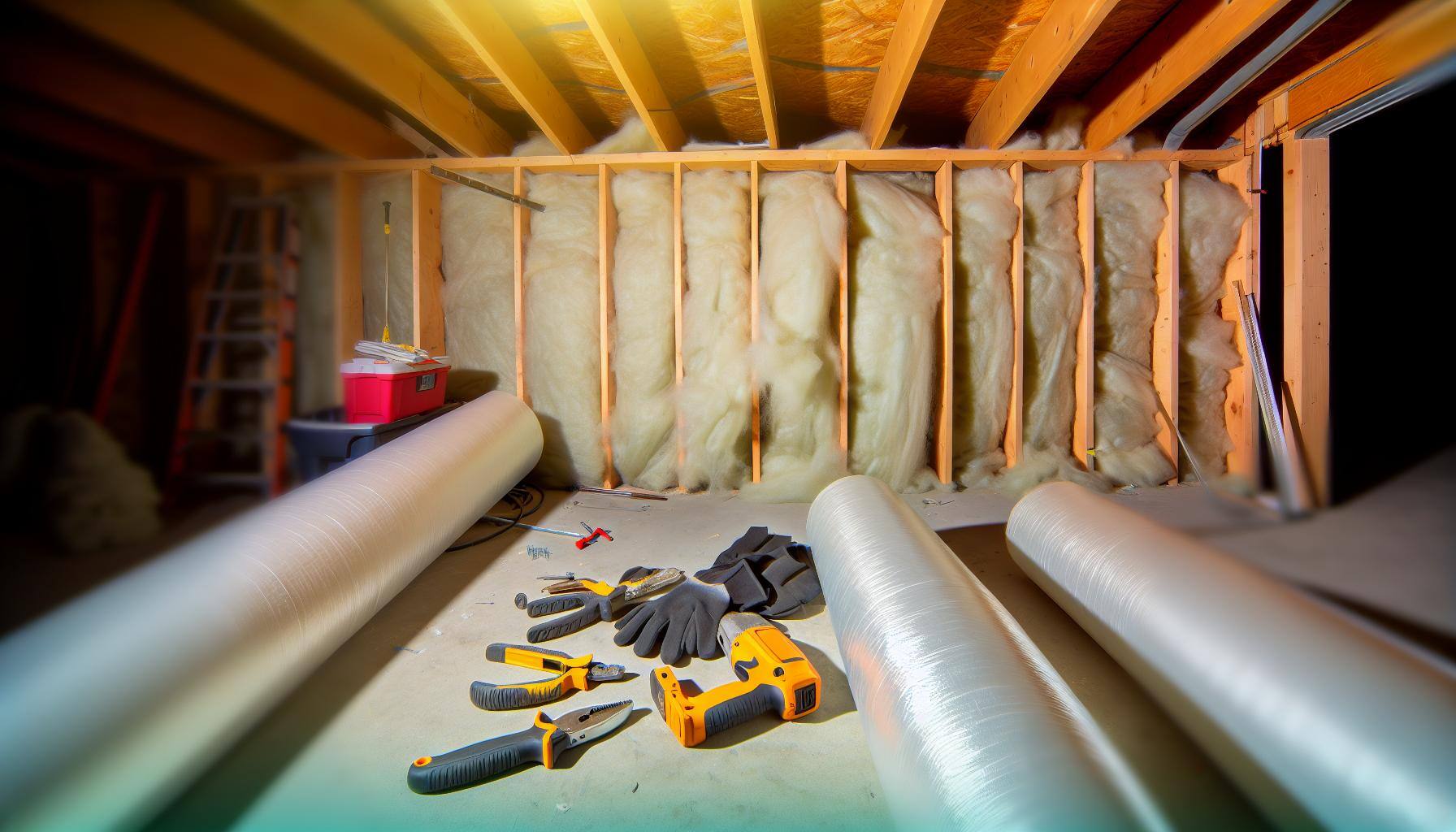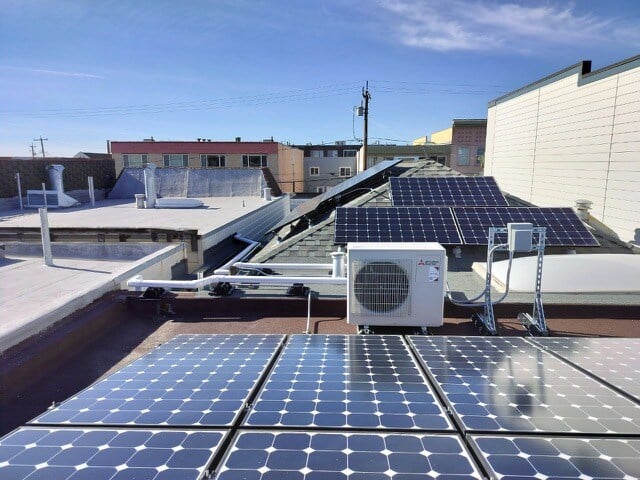Are Window Insulation Kits Effective?
Updated September 2024
Let's say your windows are drafty and causing huge problems with heating and cooling your home. You may be tempted to purchase a cheap window insulation kit, consisting of little more than thin plastic shrink wrap. Sorry, but using plastic on windows typically won't solve your window insulation issues. In this article, you'll discover better approaches and helpful tips.
Why should you trust us?
Here at QuitCarbon, our expert planners have helped thousands of homeowners evaluate the best heat pump water heater options for their homes.
We provide free ENERGY STAR® certified guidance along with vetted local contractors to upgrade your home with heat pumps, induction cooking, EV chargers, solar, batteries, and more.
QuitCarbon has won prizes from the US Department of Energy and we collaborate with the Pacific Northwest National Laboratories and the National Renewable Energy Laboratory (NREL) to improve the accuracy of our content.
- Do Window Insulation Kits Work?
- Is Putting Plastic on Windows Helpful During the Summer?
- How Can Window Insulation Be Improved?
- Is Winterizing Your Windows Worth the Time?
- What Are Some Long-Term Solutions for Uneven Temperatures?
Do Window Insulation Kits Work?
Using plastic on windows as insulation doesn't provide consistent protection against outdoor cold and heat. Building science supports this. Moreover, window kit manufacturers' claims of energy savings might be more dramatic than what homeowners actually experience. Thermal curtains may offer better temporary insulation in most cases.
To fix the issue, you need a complete solution. Professional air sealing and upgraded insulation are needed to properly insulate your windows.
How Window Insulation Kits Work
A window insulation kit is intended to establish an airtight barrier between your window and your home's interior. The plastic film forms a trap for the air between your window and the film itself. Installing these window plastic kits is straightforward. You cut the plastic to fit your window and use double-sided tape to attach it to the entire pane. Then, usually with a hair dryer, you shrink-wrap the plastic film to fit snugly across.
In theory, this is meant to prevent cold or hot air from outside from entering your home through your windows. Some people refer to installing a window insulation kit as "winterizing your windows" or "sealing your windows." The idea is to reduce energy waste and fully insulate your windows.
Does this work? No, it does not. To understand why, you need to measure the "R-value" of your home insulation. R-value measures the thermal resistance of a material. The higher the R-Value, the better your insulation is.
Here's a quick comparison:
- The approximate R-value of a standard double-pane window is 2.
- The standard rolled-up batts of fiberglass insulation (like what you might use to DIY your attic insulation) have an R-value of about 2 to 2.5 per inch.
- An insulated wall has an R-value between 12 to 19.
- What about the plastic sheeting from a window insulation kit? Well, a single layer of quality polyethylene film has an R-value of approximately 0.85. These are the types of film used in greenhouses and farms. The plastic sheeting in your window insulation kit is usually much thinner than that. You can expect an R-value far worse than 0.85.
Even if you can trap minimal outside air behind the plastic, you won't gain much additional insulation around your windows, despite these kits being marketed as window insulation. While window insulation kit manufacturers claim they can reduce your energy bills by 30–50%, most homeowners won't see that kind of dramatic reduction from putting plastic on their windows.
Is Putting Plastic on Windows Helpful During the Summer and Winter?
Once again, the answer is no. The plastic film is too thin to block substantial heat transfer. While window insulation kits may help keep out some heat, the effect will likely be minimal. Thermal curtains or window shades, can offer more effective insulation and keep your home cooler during the summer. You can also add solar window film that will block UV rays and add some heat protection.
During winter, plastic wrap won't do much to keep out cold. You can winterize windows by applying weatherstripping and hanging thermal curtains. If you notice any gaps or holes, you can patch them up and prevent air from entering.
How Can Window Insulation Be Improved?
You can still take meaningful steps to improve your window insulation and reduce drafts. If you're looking to improve your home's window insulation, consider these options:
- Replace old windows with energy-efficient ones. Energy-efficient windows have better insulation and sealing, which helps keep drafts out and minimizes heat transfer. You can also refit your window panels so they let in less air.
- Install storm windows. Storm windows provide an extra layer of protection and insulation, increasing the overall insulation of your windows.
- Apply weather-stripping. Weatherstripping can seal gaps around windows, keeping drafts out and improving insulation.
- Use thermal curtains or shades. Thermal curtains or shades can effectively insulate windows, reducing heat loss in the winter and heat gain in the summer.
- Caulk and seal gaps around windows to prevent drafts. If your windows are still letting in air, you can fill up the gaps with caulk and sealant.
Is Winterizing Your Windows Worth the Time?
Winterizing your windows can be an effective way to reduce drafts and heat loss. Sealing them with appropriate techniques like weatherstripping can help. However, it's important to address the root causes of poor window insulation, such as aging windows or inadequate insulation in the walls and attic. There's little value in insulating a window if the walls of your house (which take up far more surface area) are not building a strong thermal boundary.
Homes often have ineffective insulation due to eventual decay or poor construction, especially in areas like the attic or garage. Because of this, air gets through the walls and makes the entire house drafty. Even if you winterized every window in your house, you would be unable to make up for these gaping holes in your insulation.
What Are Some Long-Term Solutions for Uneven Temperatures?
To halt uneven temperatures in your home, you need to have a long-term vision for insulation. Consider the following options to regulate temperature and plug leaks:
- Inspect and upgrade your home's insulation, particularly in the attic, garage, and walls.
- Ensure proper air sealing throughout your home, addressing gaps around windows, doors, and other areas where drafts may occur. Add weatherstripping or sealants when necessary.
- Replace older windows with energy-efficient windows.
- Regularly maintain your HVAC system to ensure peak performance and efficiency. Consider adding mini-split heat pumps that can regulate temperatures in individual rooms.
- Install a programmable or smart thermostat to regulate your home's temperature.
In summary, while window insulation kits may provide some minimal benefits, they are not a long-term solution to improving your home's insulation and energy efficiency. Instead, focus on upgrading insulation, sealing gaps, and maintaining your HVAC system to achieve more consistent temperatures and energy savings.
At QuitCarbon, we have helped hundreds of homeowners with their insulation needs. Fixing your home's insulation can be a long and difficult process, but we make it easy by giving you a free clean-energy that clearly outlines your next steps. Then we connect you with vetted contractors who will make your home upgrades simple.




